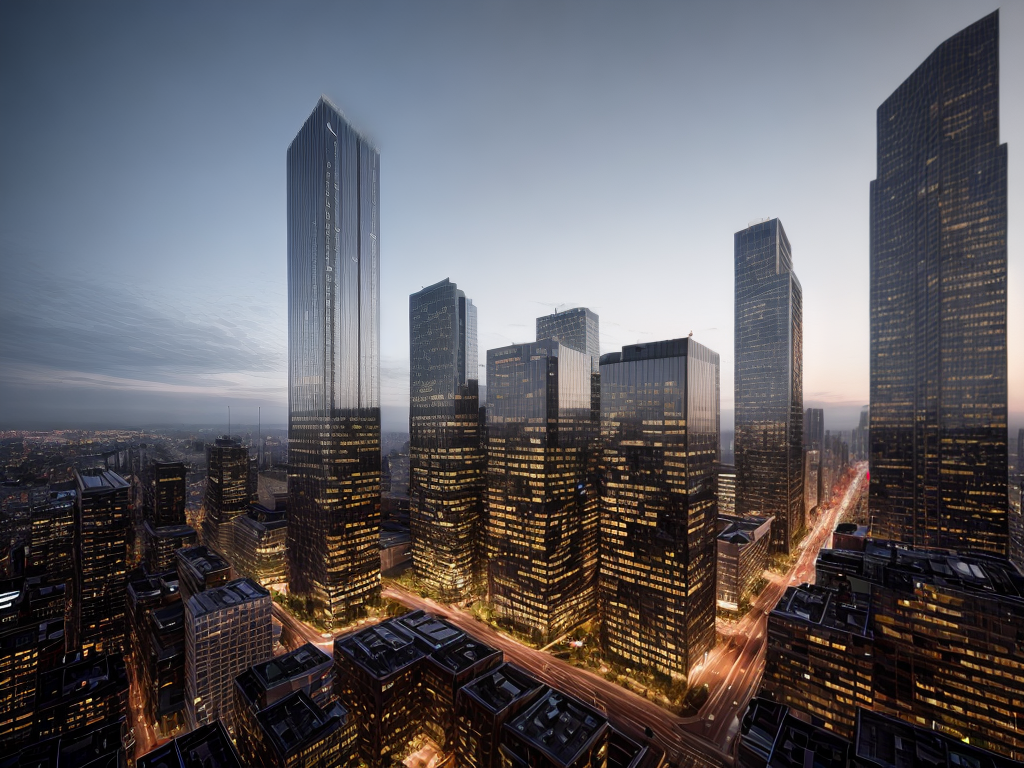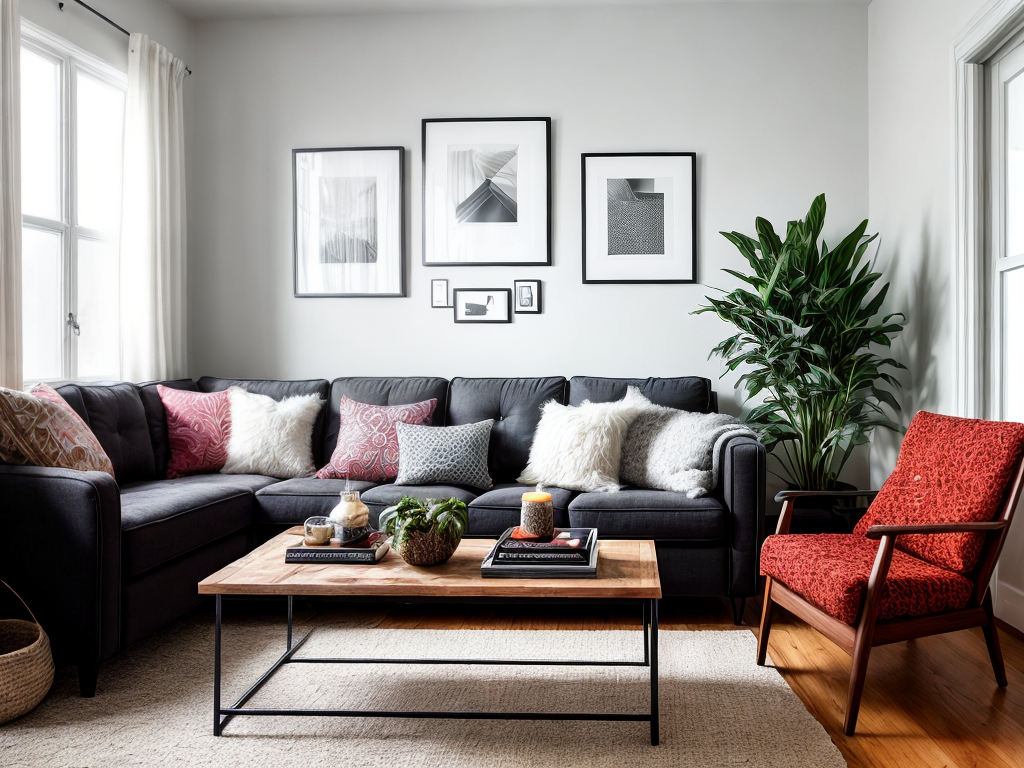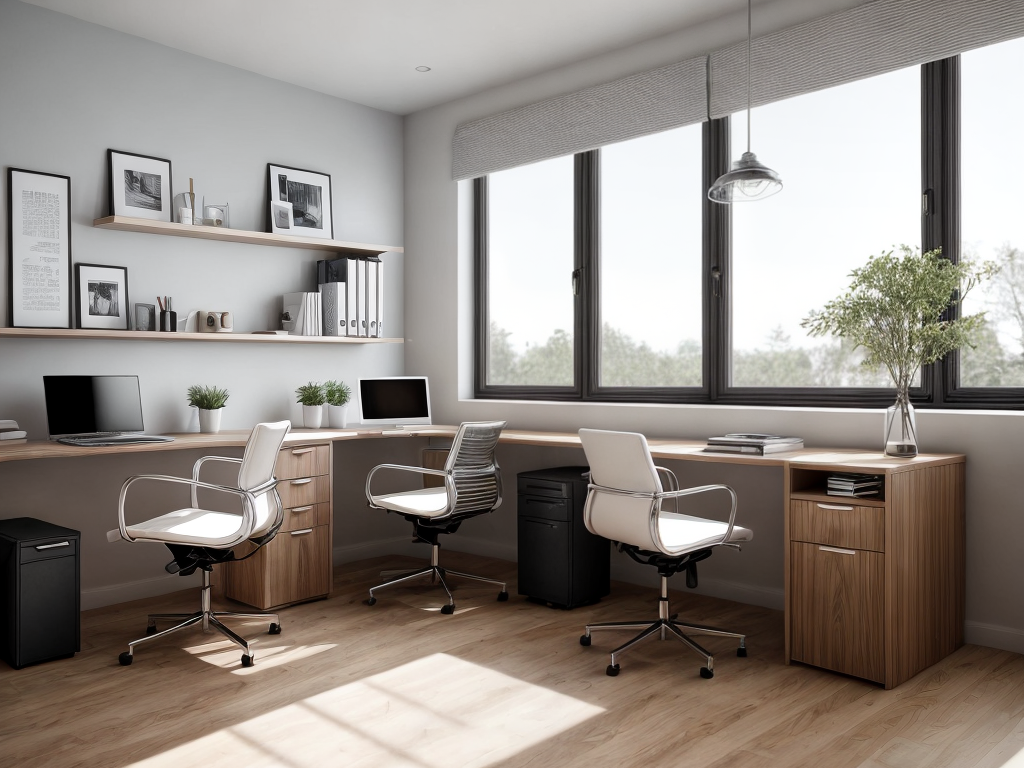
They say that necessity is the mother of invention, and in the realm of design, this sentiment holds true. In recent projects, I have had the privilege of witnessing innovative design solutions that have revolutionized various industries. From sustainable architecture that harmonizes with the environment to user-friendly interfaces that seamlessly connect users to technology, these projects have pushed the boundaries of what is possible. But it doesn’t stop there. The integration of adaptive technology and the optimization of creative spaces have created new possibilities, while collaborative design processes and the incorporation of artificial intelligence have elevated the way we approach design. The world of design is evolving rapidly, and in this discussion, we will explore some of the most groundbreaking design solutions that are shaping the present and the future.
Sustainable Architecture
In my recent projects, I have implemented sustainable architecture practices to create environmentally-friendly and energy-efficient designs. One of the key aspects of sustainable architecture is green building, which focuses on reducing the overall environmental impact of a structure throughout its entire lifecycle. This includes using materials that are sourced responsibly, minimizing waste during construction, and designing for energy efficiency.
To achieve energy efficiency, I have incorporated various strategies into my designs. One of the most effective methods is optimizing the building’s orientation and layout to maximize natural daylighting and reduce the need for artificial lighting during the day. This not only reduces energy consumption but also creates a more pleasant and productive indoor environment.
Another important aspect of energy efficiency is the use of renewable energy sources. I have integrated solar panels into the design of my buildings, allowing them to generate their own clean energy. This not only reduces the reliance on fossil fuels but also lowers the operating costs of the building over its lifetime.
In addition to these measures, I have also focused on improving insulation and air sealing to minimize heat loss in the winter and heat gain in the summer. This helps to reduce the energy required for heating and cooling, resulting in lower utility bills and a smaller carbon footprint.
User-Friendly Interfaces
To enhance user experience, I have implemented intuitive and user-friendly interfaces in my recent projects. The goal is to provide users with a seamless interaction and intuitive navigation that allows them to easily navigate through the application or website.
One way I achieve this is by using clear and concise language. I ensure that the text and labels used in the interface are easy to understand and straightforward. This helps users quickly grasp the purpose and functionality of different elements on the screen.
Another aspect of creating user-friendly interfaces is the layout and organization of the content. I make sure that the information is presented in a logical and intuitive manner, with clear hierarchies and visual cues. This helps users find what they are looking for without any confusion or frustration.
Furthermore, I pay attention to the visual design of the interface. I use consistent and recognizable icons, buttons, and color schemes. This helps users easily identify interactive elements and understand their purpose.
Adaptive Technology Integration
With the rapid advancements in technology, I have successfully integrated adaptive technology into my recent projects. One area where I have utilized this technology is in smart home design. By incorporating smart home technology, I am able to create spaces that are more accessible and inclusive for all users. For example, I have installed voice-activated controls for lighting, temperature, and security systems. This allows individuals with mobility issues or disabilities to easily navigate and control their environment. Additionally, I have implemented features such as automated blinds and curtains, which can be operated using a smartphone or voice commands. These adaptations provide convenience and independence for users with limited mobility. Inclusive design is a key aspect of my approach, and adaptive technology plays a crucial role in achieving this goal. By integrating smart home technology, I am able to create spaces that are not only aesthetically pleasing but also functional and accessible to a wide range of users. As technology continues to advance, I am excited to explore new ways to incorporate adaptive technology into my design projects, further enhancing the user experience and promoting inclusivity.
Creative Space Optimization
When it comes to creative space optimization, there are three key points to consider: efficient room layouts, multi-functional furniture, and clever storage solutions. Efficient room layouts involve maximizing the use of space by arranging furniture and fixtures in a way that promotes flow and functionality. Multi-functional furniture serves multiple purposes, such as a sofa that can also be used as a bed or a coffee table with built-in storage. Clever storage solutions help to minimize clutter and keep the space organized, such as utilizing wall-mounted shelves or hidden storage compartments.
Efficient Room Layouts
In recent projects, I have implemented efficient room layouts that optimize creative space. By incorporating ergonomic furniture and effective space management techniques, I have been able to create functional and productive environments. Here are three key strategies I have employed:
-
Flexible Furniture Arrangements: I have utilized modular furniture that can be easily reconfigured to suit different needs. This allows for versatile usage of the space and promotes collaboration and creativity.
-
Maximizing Vertical Space: To make the most of limited floor area, I have employed vertical storage solutions and utilized wall space for shelving and hanging organizers. This helps keep the room clutter-free and maximizes usable space.
-
Smart Traffic Flow: By carefully considering the placement of furniture and equipment, I have ensured smooth traffic flow within the room. This eliminates any obstacles and creates an open and inviting atmosphere.
Multi-Functional Furniture
To further optimize creative space in recent projects, I have implemented multi-functional furniture solutions that maximize functionality and efficiency. By incorporating space-saving designs and modular furniture, I have been able to create flexible and versatile spaces that can adapt to various needs. For example, I have utilized convertible sofa beds that can be easily transformed into a comfortable sleeping area, saving valuable space in smaller rooms. Additionally, I have incorporated storage ottomans and coffee tables with hidden compartments, providing extra storage solutions without sacrificing style. These multi-functional furniture pieces not only maximize the use of space but also add a touch of elegance and sophistication to the overall design. Overall, the integration of multi-functional furniture has proven to be an effective solution for optimizing creative spaces in recent projects.
Clever Storage Solutions
One effective way to optimize creative space is by implementing clever storage solutions. These solutions not only help in organizing items, but also create more room for creativity and functionality. Here are some space-saving solutions that incorporate hidden compartments:
-
Wall-mounted shelves with hidden storage: These shelves not only serve as a display for books or decor, but also have hidden compartments behind them, providing extra storage for smaller items.
-
Under-bed storage: Utilizing the space under the bed is a great way to maximize storage. There are various options available, such as under-bed drawers or storage containers that slide out easily.
-
Multi-functional furniture: Furniture pieces that have built-in storage compartments, like ottomans or coffee tables with hidden storage, are perfect for smaller spaces.
These clever storage solutions not only help in keeping a space organized, but also allow for a more efficient and clutter-free environment.
Collaborative Design Processes
When it comes to design, teamwork is crucial for success. Collaborative design processes allow for collective problem-solving, where different perspectives and expertise come together to find innovative solutions. By working together, we can leverage our individual strengths and create designs that are truly comprehensive and effective.
Teamwork in Design
Collaborative design processes enhance efficiency and innovation in recent projects. By fostering collaborative creativity, teams are able to tap into a diverse range of perspectives and expertise, leading to more innovative and well-rounded design solutions. Design thinking, a key component of collaborative design processes, encourages a human-centered approach that prioritizes empathy and user experience. This collaborative approach allows for more effective problem-solving and idea generation, as different team members can contribute their unique insights and skills. Additionally, teamwork in design promotes a sense of ownership and accountability within the team, leading to increased motivation and productivity. Overall, collaborative design processes not only foster creativity and innovation but also enable teams to produce more efficient and effective design solutions.
Collective Problem-Solving
By harnessing the power of collective problem-solving, design teams are able to leverage their diverse perspectives and expertise to generate innovative and efficient design solutions. Collaborative innovation and design thinking are at the core of this approach, as they encourage teams to work together, exchange ideas, and challenge conventional thinking. Through collaborative problem-solving, teams are able to identify and address design challenges more effectively, resulting in solutions that are both practical and creative. This approach also fosters a sense of ownership and collaboration among team members, leading to increased motivation and productivity. In order to facilitate effective collaboration, design teams often utilize various tools and techniques, such as brainstorming sessions, prototyping, and iterative design processes. By embracing collective problem-solving, design teams can unlock their full potential and create impactful design solutions.
| Collaborative Innovation | Design Thinking |
|---|---|
| Encourages teamwork | Emphasizes user-centricity |
| Fosters creativity | Promotes iterative processes |
| Stimulates idea exchange | Values experimentation |
| Challenges conventional thinking | Focuses on problem-solving |
| Drives efficient design solutions | Encourages empathy |
Integration of Artificial Intelligence
Artificial Intelligence has been effectively integrated into recent projects, enhancing their functionality and efficiency. This integration has brought about significant advancements in various areas, including AI ethics and AI-powered automation.
-
AI Ethics:
-
Ensuring responsible AI usage: With the integration of AI, ethical considerations have become paramount. Projects now emphasize the development of AI systems that align with ethical guidelines and principles. This includes addressing issues such as bias, privacy, and transparency in AI algorithms and decision-making processes.
-
Promoting fairness and inclusivity: AI integration aims to minimize bias and discrimination by implementing fairness measures. This involves ensuring that AI systems do not perpetuate existing societal inequalities and are inclusive of diverse perspectives and experiences.
-
Enhancing accountability: The integration of AI has led to the development of mechanisms to hold AI systems accountable for their actions. This includes establishing clear guidelines for AI decision-making and implementing auditing processes to monitor and evaluate AI behavior.
-
AI-powered automation:
-
Streamlining processes: AI integration has revolutionized project workflows by automating repetitive tasks, reducing human error, and increasing overall efficiency. This enables teams to focus on more complex and creative aspects of their work.
-
Intelligent decision-making: AI-powered automation facilitates data analysis and interpretation, enabling projects to make informed decisions based on real-time insights. This improves project outcomes and helps identify potential risks or opportunities.
-
Enhancing productivity and scalability: By automating routine tasks, AI integration allows projects to scale rapidly without the need for additional human resources. This leads to increased productivity and cost savings.





